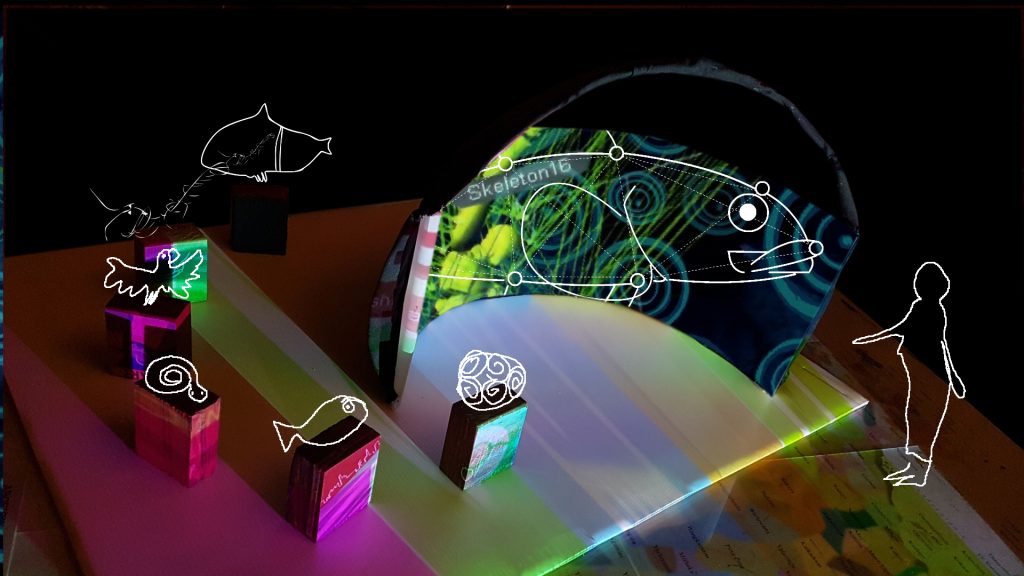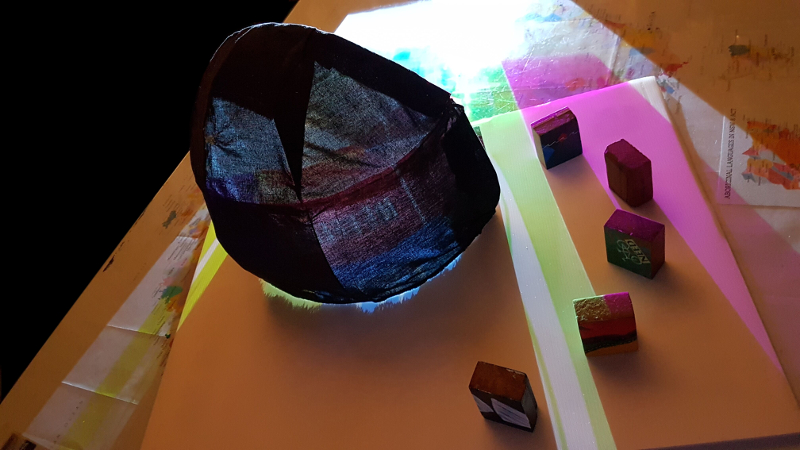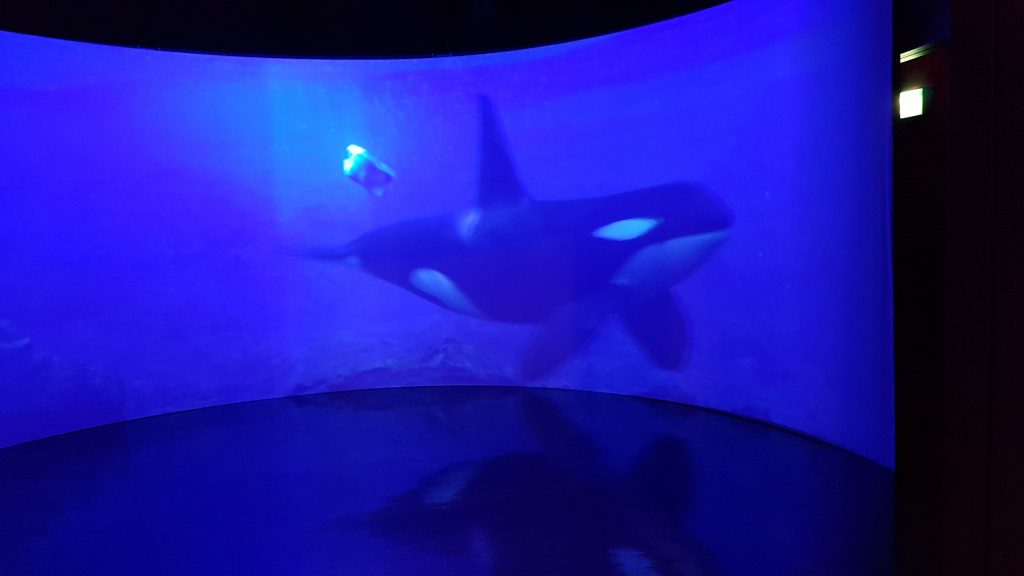
- Purpose and outline
The purpose of Seeding Treaties: Voices from the Southern Ocean is to inspire and inform people to tell their own stories of relationship to Aboriginal Australia and Antarctica, as a way of making treaties (agreements) on how we live well together as Indigenous and Western peoples in a global community. There are four components: a small exhibition, presentations, workshops and a website. Seeding Treaties will travel over a three year period to venues that include the Woodford Festival, Victorian College of the Arts (for Australian Network for Art & Technology), University of Technology Sydney, Boomalli Aboriginal Art co-operative, Kerrie Lowe Gallery, Sea Museum (Australian Maritime Museum) and the Antarctic Festival.
- Exhibition
The exhibition features a central structure for screening animations that combine new and ancient knowledge about relationships in nature, and for holding talks by project guides and co-creators about the process of developing ‘Seeding Treaties: Voices from the Southern Ocean’. The structure is inspired by the sea urchin and by traditional Aboriginal meeting houses. Animations come from the Living Data archives and will be combined with new ones made in the workshops that will be part of the exhibition event. Surrounding the Sea Urchin meeting house are six plinths for holding small vessels that represent Algae, Fish, Snake, Bird, Krill, Whale. Within each vessel is a small data projector that casts sounds and animations out through diaphanous skins. These will be adapted to relate to places where ‘Seeding Treaties’ travels.
Animations from Living Data archives and workshops will show connections between Indigenous and Western perspectives through art, data, and words from project guides including Uncle Max Dulamunmun Harrison, Bruce Pascoe, Frances Bodkin, Chels Marshall, William Gladstone, Andrew Constable, Carmel Bird, Megan Williams, Tyson Yunkaporta and Helen Milroy.
Workshops will be held in the exhibition space or in a separate area if needed.
Exhibition layout, dimensions and facilities requirements Dimensions: Minimum size is 4m x 3m (area of four standard dining room tables), and can be expanded (eg 8m x 6m) to a larger space if available.
Lighting: Ambient light must be controlled so data projections are clearly visible and so people can see their way around. This can be done by screens on windows or free-standing screens (an example is the double layer screens used at Sea Museum Theatrette, Sydney). Optimum illumination is 50 to 100 lux.
Facilities requirements: Minimum of 4 power points for data projectors: one large, 6 tiny. Optimum is one power point in the ceiling and 3 accessible from the floor for the plinths. Internet connection for website access, and tablets for access to online components.
Personnel requirements: Two technicians for 3 hrs each to assist in setting up data projections, signage, plinths, and controlling ambient light…
Workshops
Workshop costs will be covered by participants and host organisations. The types of workshops will include development of animations eg Giving voice to creatures with stop motion animation (requiring computer equipment), art classes to respond to Helen Milroy’s stories ‘Penguin and Sky’ and more; Tracing scientific data to relate the data to lived experience; Looking through microscopes and drawing what you see in water; Visualising ‘Being like your place’, guided by Tyson Yunkaporta’s Sand Talk; Giving voice to creatures with stop motion animation; Creating with clay to make a vessel to hold your story; Tracing scientific data to relate the data to lived experience; Looking through microscopes and drawing what you see in water; Writing the story of your life as a creature, with Carmel Bird and Lynden Nicholls.
Documentation
Documentation is made here on this website with links to Antarctic Animation, Living Data, and related URLs.
Documentation will include records of impacts. Evidence of impacts will be qualitative, including animations made in response to presentations, and spoken and written records of changes in understanding and behaviour reported by project co-creators, workshop participants and the public. See examples at Living Data Impacts.


